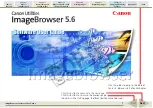
RADIUS Administration
EPICenter Reference Guide
361
4
Enter the RADIUS server’s shared secret in the
RADIUS Secret
field for both the primary and
secondary RADIUS servers.
This shared secret is a shared key by which the RADIUS server and its clients recognize each other,
and which they use for secure transmission of user passwords.
NOTE
If the shared secret is changed in either of the RADIUS servers, you must change it in EPICenter as well, or else
EPICenter will no longer be able to access the RADIUS server.
5
Click
Apply
to have the configuration changes take effect.
NOTE
Some configuration may be required on the external RADIUS server to allow EPICenter to authenticate users with
various roles. See the EPICenter Concepts and Solutions Guide for a full explanation of how to configure an external
RADIUS server to perform EPICenter user authentication.
RADIUS Server Configuration
To configure EPICenter as a RADIUS server, follow these steps:
1
Click the
Enable EPICenter as a RADIUS Server
button in the
RADIUS Configuration
panel at the
top of the page.
This enables the fields in the
Server Configuration
panel.
2
Enter the RADIUS server’s shared secret in the
RADIUS Secret
field.
NOTE
If you change the secret in the RADIUS server, you must also change it in any of the RADIUS clients (Extreme
switches) that use the RADIUS server for user authentication.
3
The default port used for the RADIUS server is 1645. To change the server port, enter the port
number in the
RADIUS Port
field.
NOTE
If you change the RADIUS server port, you must make sure that the port used by any RADIUS clients (Extreme
switches that use this RADIUS server for user authentication) match the port you enter for the server.
4
To disable RADIUS response messages, uncheck the
Enable RADIUS Response Messages
checkbox.
This prevents the RADIUS server from sending a response message when authentication fails. Check
the box to enable these messages. This is enabled by default.
5
Click
Apply
to have the configuration changes take effect.
Disabling RADIUS for EPICenter
To disable the use of RADIUS authentication, do the following:
Summary of Contents for EPICenter 6.0
Page 14: ...EPICenter Reference Guide 14 ...
Page 18: ...Preface EPICenter Reference Guide 18 ...
Page 19: ...1 EPICenter Basic Features ...
Page 20: ......
Page 24: ...EPICenter Overview EPICenter Reference Guide 24 ...
Page 44: ...Getting Started with EPICenter EPICenter Reference Guide 44 ...
Page 100: ...The Inventory Manager EPICenter Reference Guide 100 ...
Page 140: ...The EPICenter Alarm System EPICenter Reference Guide 140 ...
Page 172: ...Configuration Manager EPICenter Reference Guide 172 ...
Page 196: ...The Firmware Manager EPICenter Reference Guide 196 ...
Page 220: ...The Interactive Telnet Feature EPICenter Reference Guide 220 ...
Page 250: ...The Grouping Manager EPICenter Reference Guide 250 ...
Page 276: ...Real Time Statistics EPICenter Reference Guide 276 ...
Page 342: ...Using the VLAN Manager EPICenter Reference Guide 342 ...
Page 348: ...The ESRP Monitor EPICenter Reference Guide 348 ...
Page 446: ...EPICenter Reports EPICenter Reference Guide 446 ...
Page 447: ...2 Advanced Upgrade Features ...
Page 448: ......
Page 480: ...EAPS Protocol Monitoring and Verification EPICenter Reference Guide 480 ...
Page 508: ...Using the Policy Manager EPICenter Reference Guide 508 ...
Page 525: ...3 Appendices ...
Page 526: ......
Page 542: ...EPICenter Backup EPICenter Reference Guide 542 ...
Page 564: ...Voice over IP Manager EPICenter Reference Guide 564 ...
Page 580: ...EPICenter Reference Guide 580 ...
















































